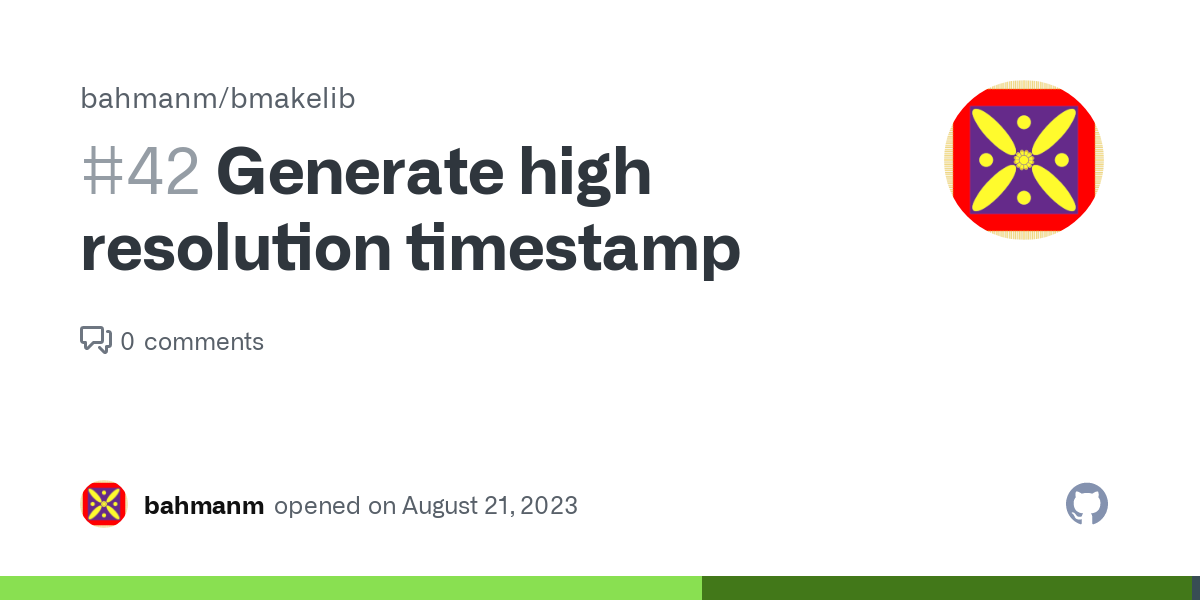bahmanm
Husband, father, kabab lover, history buff, chess fan and software engineer. Believes creating software must resemble art: intuitive creation and joyful discovery.
Views are my own.
- 33 Posts
- 94 Comments

 2·2 years ago
2·2 years agoGood point! I just replaced my LI profile photo w/ an abstract image 🍻

 1·2 years ago
1·2 years agoSince I haven’t heard/read about any bugs, I plan to release v5.0.0 on the 13th (😬)
I’ll keep this post, well, posted 🙂
I appreciate my post may sound like a criticism of lemmy.ml (and hence the downvotes.) It’s not. As I said, I’m genuinely trying to see if there’s anything I can do to give back to one of my (few) favourite online communities.
That said, it seems like no one else shares my views. And that is understandable 🤷♂️

 5·2 years ago
5·2 years agojunk
I’d say “irrelevant to my interests” 🤷♂️

 1·2 years ago
1·2 years agoMagnus Carlsen and Alireza Firouzja will throw down
This promises to be fun…a lot! 📺 🛋 🍿
😆Can someone make a similar one for bluetooth devices too, pretty please?
Recently, I’ve found myself posting more often on Mastodon a Lemmy & blog way less - indeed credits go to Fediverse and the mods for making it a safe and welcoming place ❤
Here’s my latest one: https://www.bahmanm.com/2023/07/firefox-profiles-quickly-replicate-your-settings.html
It’s not self-hosted, rather I’m using Google’s blogspot. I used to host my own website and two dozens of clients’ and friends’ until a few years ago (using Plone and Zope.) But at some point, my priorities changed and I retired my rock-solid installations and switched to blogspot.

 12·2 years ago
12·2 years agoI agree w/ you RE posts looking horrible 👍
Though I’d say for one-liners like this, it’s mostly OK. It gets really messy when folks post more complex posts and mention and tag a bunch of times.
 91·2 years ago
91·2 years agoApparently
😂

 1·2 years ago
1·2 years agoI’m afraid I can’t be of any help 😕

 1·2 years ago
1·2 years agoAny error logs? Try launching things from the terminal and note down any messages that are printed there.

 41·2 years ago
41·2 years agoThat’s a good question 💯 In my case too, it took me some time (read years 😂) to figure out what I’m comfortable w/.
I can think of 3 major ways that you can navigate the filesystem while being able to drop to a shell when you need it:
- If you’re familiar w/ Emacs, you can either:
- Use
diredandtrampon your machine to access/navigate the target machine. - Install Emacs (
emacs-nox) on the target machine, SSH and then runemacs-noxand voila! No need fortrampin this scenario.
- Use
- Use Midnight Commander (
mc) which offers a TUI pretty much like Norton Commander (nc) from the days of yore. - Get used to the semi-standard structure of the file system and just use plain Bash (
cd,pushd&popd) to move around. That is- Understand what usually goes into common directories (like
/usr/shareor/opt) and try to follow the same pattern when rolling your own software installations. - Learn how to use your distro’s package manager to query packages and find out where things, like configurations and docs, are stored. Something as simple as
rpm -q --listis what you usually need.
- Understand what usually goes into common directories (like
HTH
- If you’re familiar w/ Emacs, you can either:

 7·2 years ago
7·2 years agomessing with the partition any more than I already have
Running
fsckis a harmless and actually pretty useful operation, esp if you boot using a USB stick.But yes, never hurts to have backups - easier said than done 😂

 72·2 years ago
72·2 years agoI’m not on a Debian-based system but a recent experience w/ packaging a software as a DEB was quite eye-opening 😅 The format and the build process felt too cluttered (to me) and it wasn’t easy for me to wrap my head around it.
I’m happy that folks are working on alternatives ✌️

 7·2 years ago
7·2 years agoHave you tried booting into recovery mode and perform a
fsckon the drive - using the grub menu? Or you could boot via USB and try the procedure.
 2·2 years ago
2·2 years agoI wonder why all the down-votes!? The linked article was a good read IMO. What did I miss here?
I can’t tell if this is a genuine question or sarcasm 🤷♂️
NOTE: Today is NOT Mozilla’s birthday!
Fun read nevertheless 🙂









The first few paragraphs were a good read where the author makes a good point.
Sadly, it somehow turns into a BluSky promotion afterwards.
Good read, nonetheless.